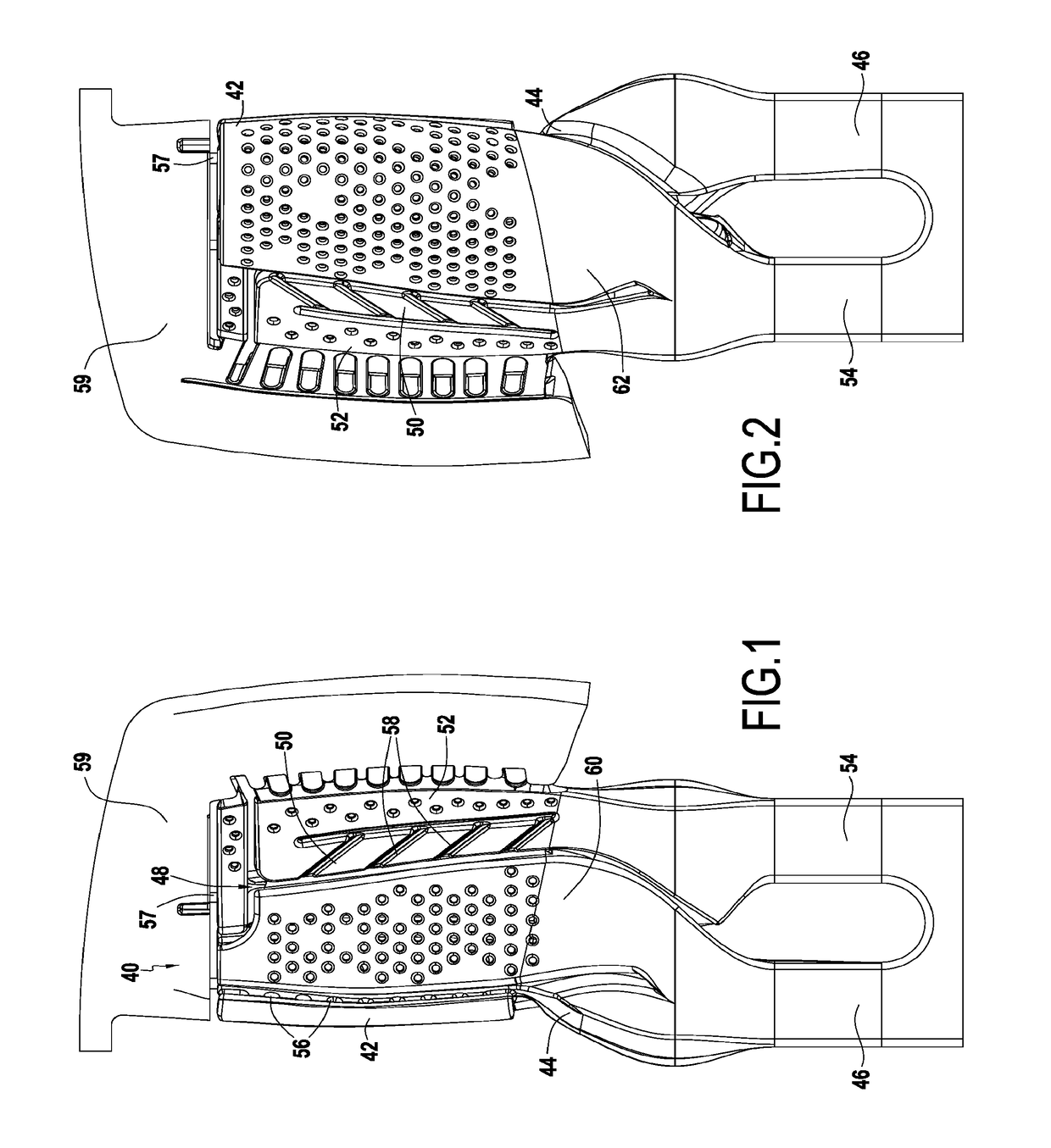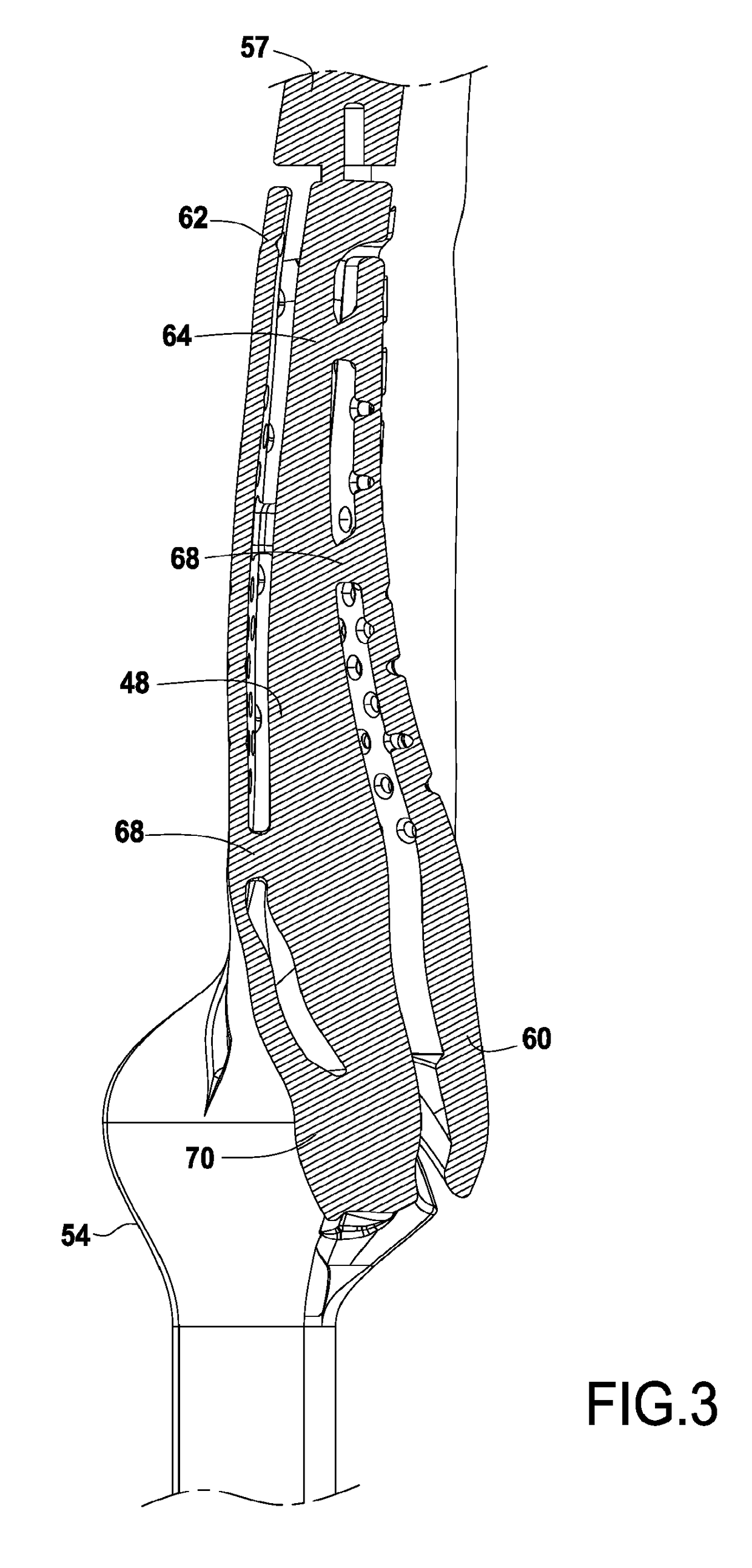CERAMIC CORE FOR A MULTl-CAVITY TURBINE BLADE
a turbine blade and multl-cavity technology, which is applied in the direction of machines/engines, foundry patterns, moulding apparatus, etc., can solve the problems of reducing the thermal efficiency of the holes located at the end of the trombone cavity, limiting their lifetime, and reducing the thermal efficiency of the hole. , to achieve the effect of reducing the drawbacks
- Summary
- Abstract
- Description
- Claims
- Application Information
AI Technical Summary
Benefits of technology
Problems solved by technology
Method used
Image
Examples
Embodiment Construction
[0022]FIGS. 1 and 2 show a ceramic core 40 for making a turbine blade for a turbine engine, respectively in a suction side view and in a pressure side view relative to the blade. The ceramic core, in the example shown, comprises seven portions or columns forming a single element. The first column 42, which is to be located on the side where the combustion gas arrives, corresponds to the leading edge cavity 28 that is to be created after casting, whereas the second column 44 corresponds to the central cavity 20, which is adjacent thereto. This cavity receives a stream of cooling air via a channel (not shown) that results, after casting, from the presence of a first column root 46 of the core 40. The other three columns 48, 50, and 52 follow go-and-return paths and correspond to the following cavities 22, 30, and 32, which receive a second cooling air stream conveyed by another channel resulting from the presence of a second column root 54 connected to the first column root 46 in orde...
PUM
| Property | Measurement | Unit |
|---|---|---|
| Mechanical strength | aaaaa | aaaaa |
| Thickness | aaaaa | aaaaa |
| Thermomechanical properties | aaaaa | aaaaa |
Abstract
Description
Claims
Application Information
 Login to View More
Login to View More - R&D
- Intellectual Property
- Life Sciences
- Materials
- Tech Scout
- Unparalleled Data Quality
- Higher Quality Content
- 60% Fewer Hallucinations
Browse by: Latest US Patents, China's latest patents, Technical Efficacy Thesaurus, Application Domain, Technology Topic, Popular Technical Reports.
© 2025 PatSnap. All rights reserved.Legal|Privacy policy|Modern Slavery Act Transparency Statement|Sitemap|About US| Contact US: help@patsnap.com



